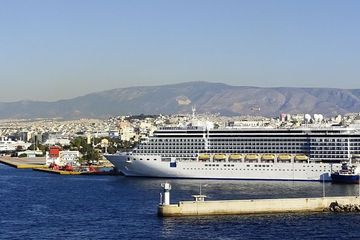Deep Sea Ports: Overview, Challenges, and Future Outlook
Deep sea ports are essential infrastructures that serve as gateways for international trade, and commerce. They are critical nodes in the global supply chain, facilitating the movement of goods and cargo between land and sea transport. A distinction is made between ports with a high transshipment share and classic import/export ports.
Classic import/export ports are primarily focused on facilitating the import and export of goods between countries. They serve as key entry and exit points for cargo entering and leaving a country's territory. The majority of the cargo passing through these ports is intended for domestic consumption or production within the country's borders. Their main goal is to efficiently process shipments, clear customs, and facilitate the movement of goods in and out of the country.
On the other hand, ports with a large transshipment share, also known as transshipment hubs or transshipment ports, act as intermediaries in the global supply chain. Their primary function is to facilitate the transfer of cargo between different vessels, without the cargo being destined for the country where the transshipment hub is located. Cargo arrives at these ports from various countries and is then transferred to other ships for onward transportation to their final destination. Transshipment ports are strategically located at key geographical points to optimize shipping routes and reduce transportation costs. They often handle a significant volume of containerized cargo, transferring it from larger vessels to smaller feeder vessels for regional distribution.
Whether classic import/export ports focused on handling goods for domestic use or production, or while ports with a high transshipment share act as intermediaries, handling goods between ships destined for different regions, both types of seaports face similar challenges.
CHALLENGES FACED BY
Sea Ports Today and in the Future

Infrastructure Upgrades: Some ports struggle with outdated or insufficient infrastructure, hindering their capacity to accommodate larger vessels and handle increased cargo volumes. Prioritizing infrastructure improvements is essential for sustained growth.
Environmental Sustainability: Climate change,environmental concerns, such as air and water pollution, habitat destruction, and emissions, require careful management. Balancing economic growth with eco-friendly practices is paramount.
Congestion Management: Increasing trade volumes and global supply chain disruption may result in port congestion, causing delays and inefficiencies in cargo handling. Efficient and flexible traffic management and infrastructure development can mitigate these issues.
Intermodal Connectivity: Seamless integration of sea, rail, and road transport networks enhances logistical efficiency. Improving intermodal connections and an efficient coordination with hinterland logistics streamlines cargo movement.
Regulatory Compliance: Adhering to international customs, environmental, and safety regulations can be complex. Ensuring compliance is crucial for unhindered trade operations.
Labour and Automation: Advancements in technology can lead to concerns about job displacement and necessitate upskilling the workforce to embrace automation while preserving employment opportunities.
Competition and Competitiveness: Global competition necessitates continual investment and modernization to attract shipping lines and maintain competitiveness.
Trade and Geopolitical Dynamics: Uncertainty resulting from political instability, trade disputes, and changes in global trade agreements can impact port operations. Adapting to geopolitical shifts is crucial for sustainable growth.
To address these challenges, port authorities must prioritize investments in modernization, environmental stewardship, digitalization, and risk management strategies. Collaboration between public and private sectors, alongside international cooperation, is vital for overcoming obstacles and ensuring the future success of sea ports.
Leading ports worldwide are positioning themselves as gateways to global trade by providing professional port services that emphasise sustainability, innovation and efficiency.
How HPC can support Sea Ports to flourish
As port-specialized consultants, HPC can help sea ports overcome various challenges and turn them into chances and opportunities for growth, success, and positive development in the future.
Our consultants bring in-depth knowledge, expertise, and experience in the port industry, which allows us to provide tailored solutions and strategies, data-driven recommendations, and implementation support. This can lead to improved efficiency, sustainability, and competitiveness for the port in the long run.




